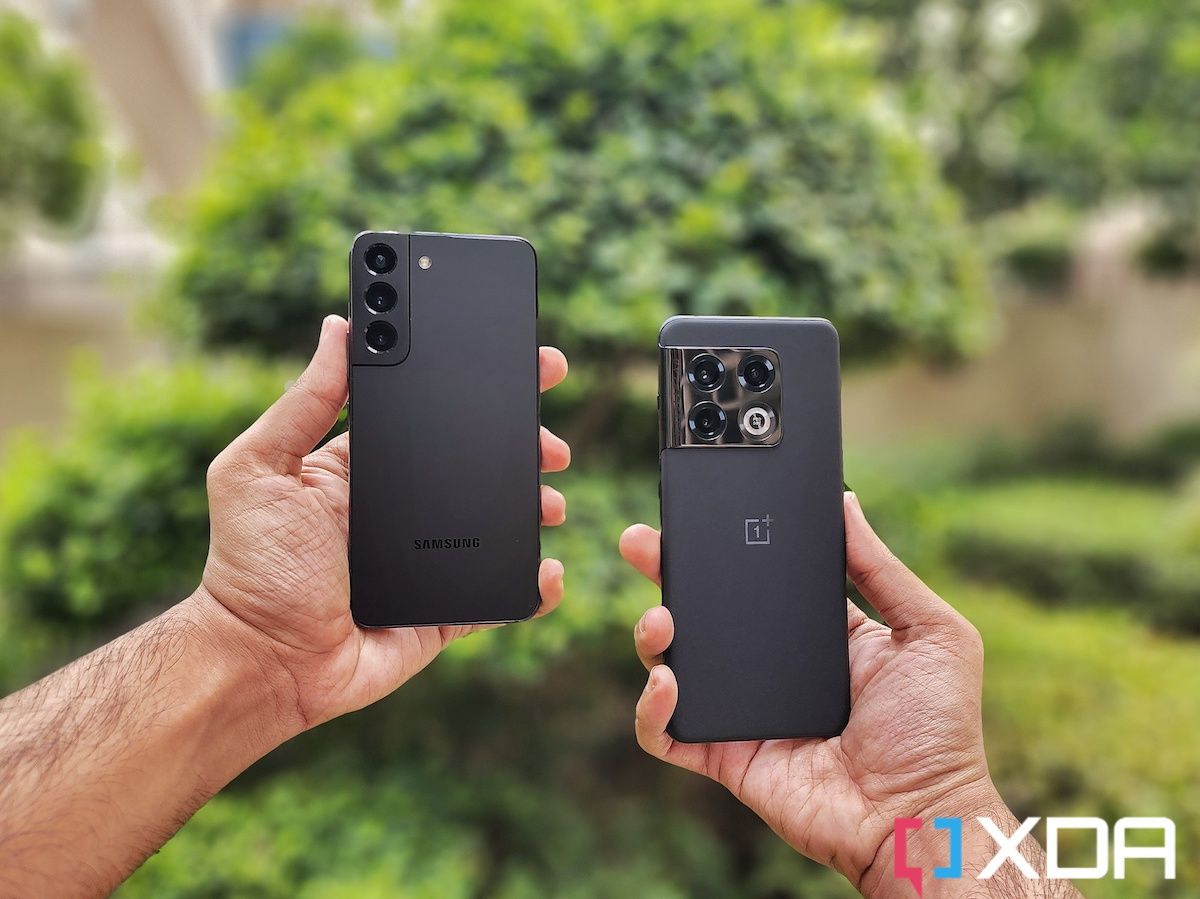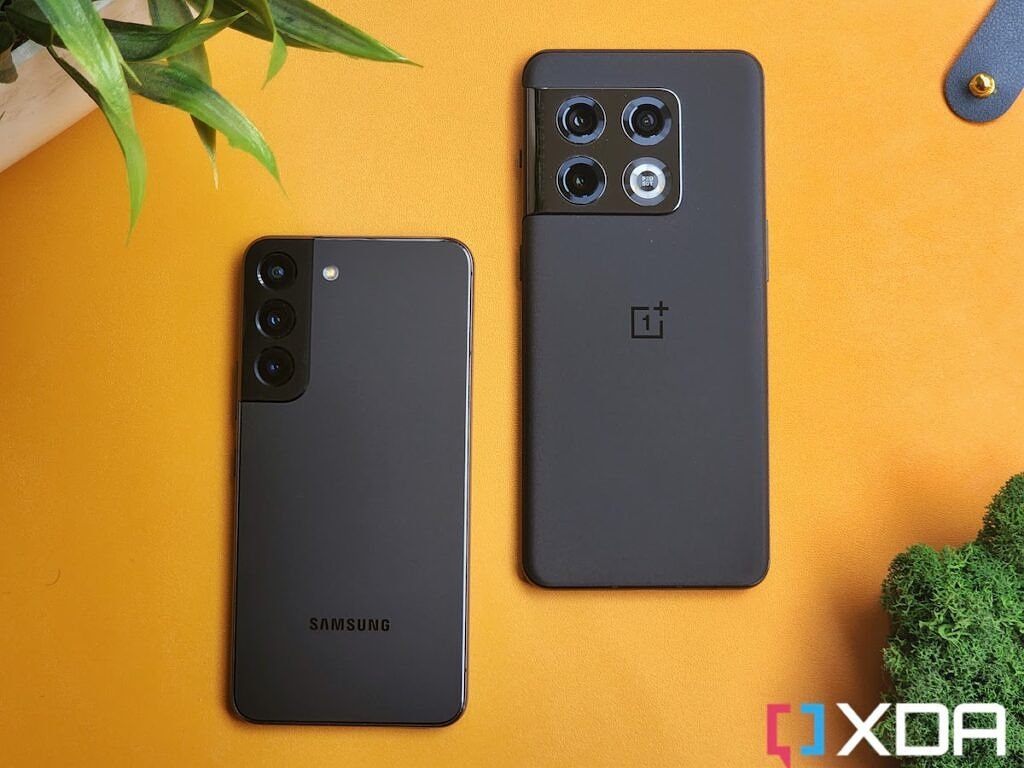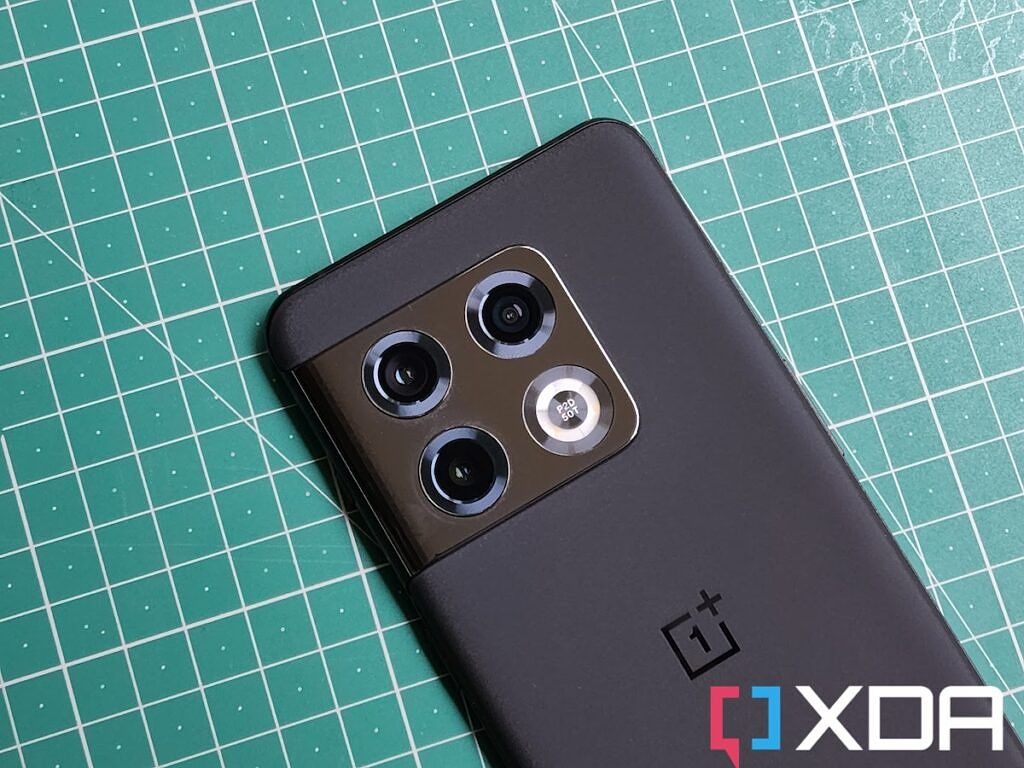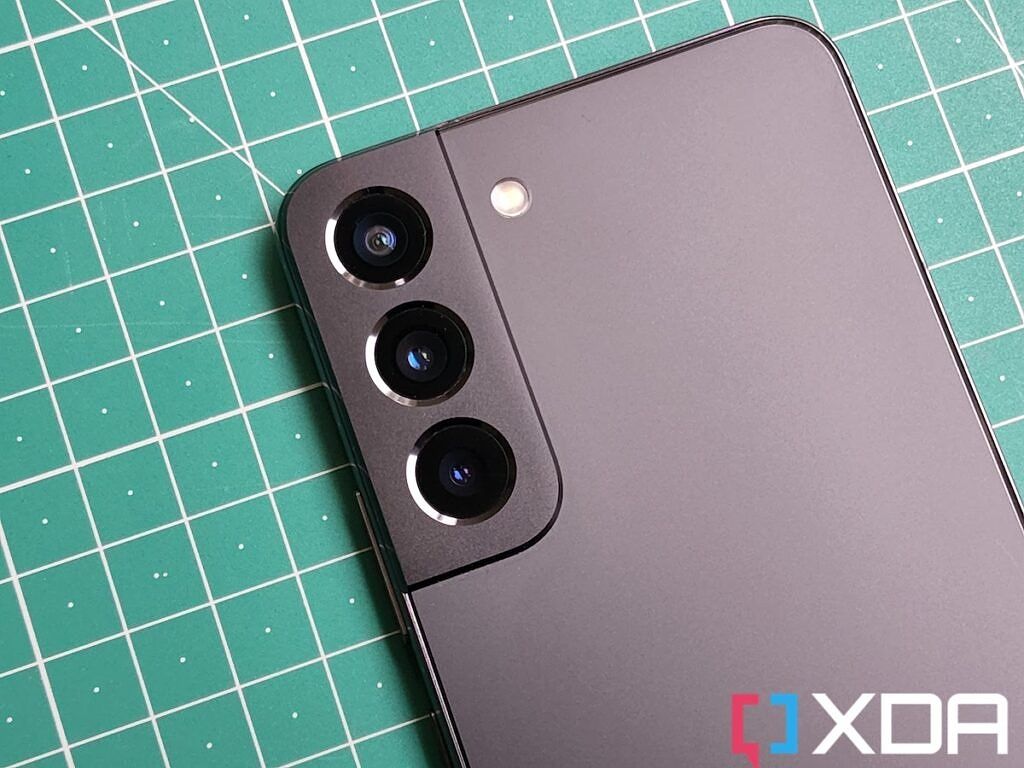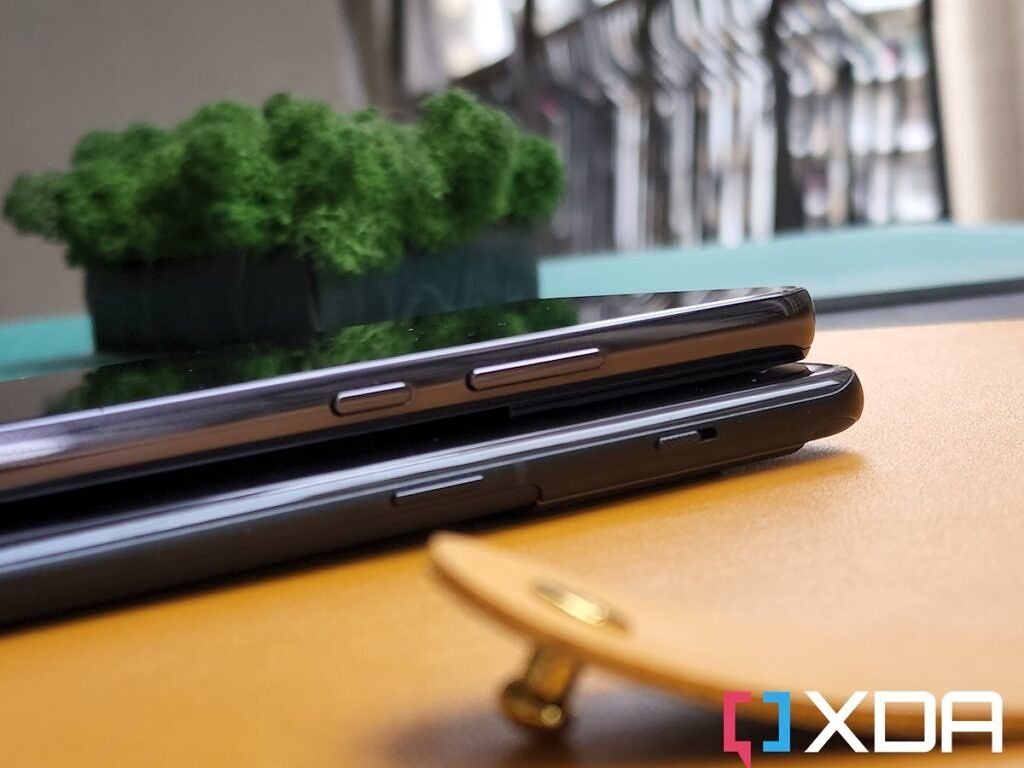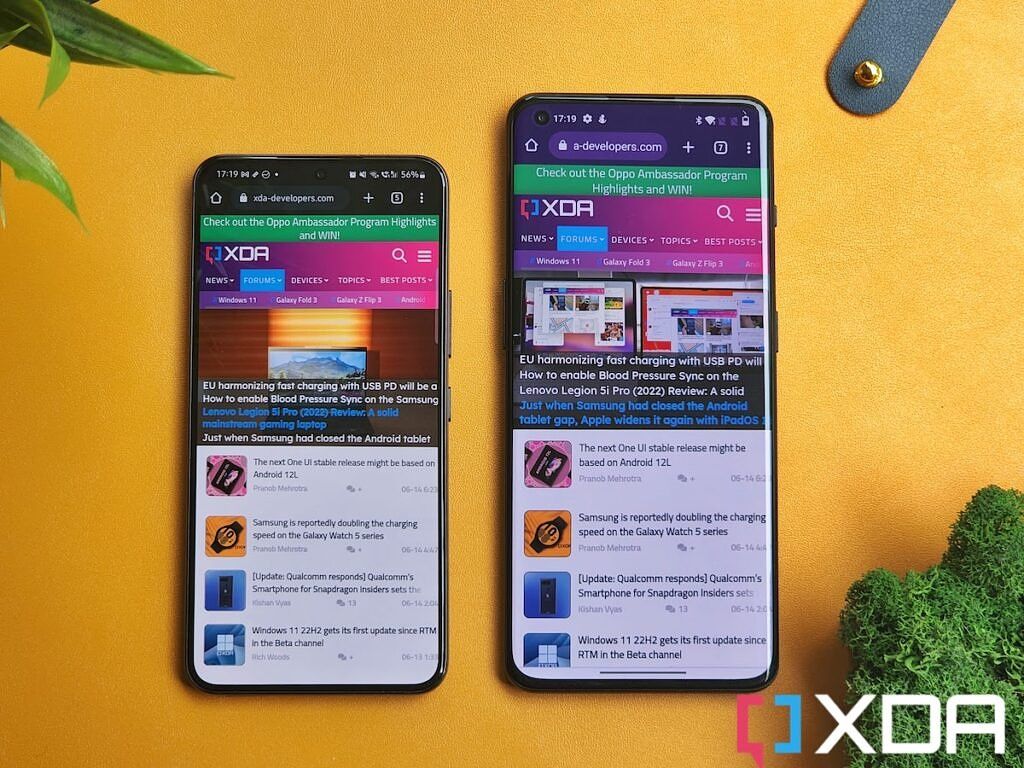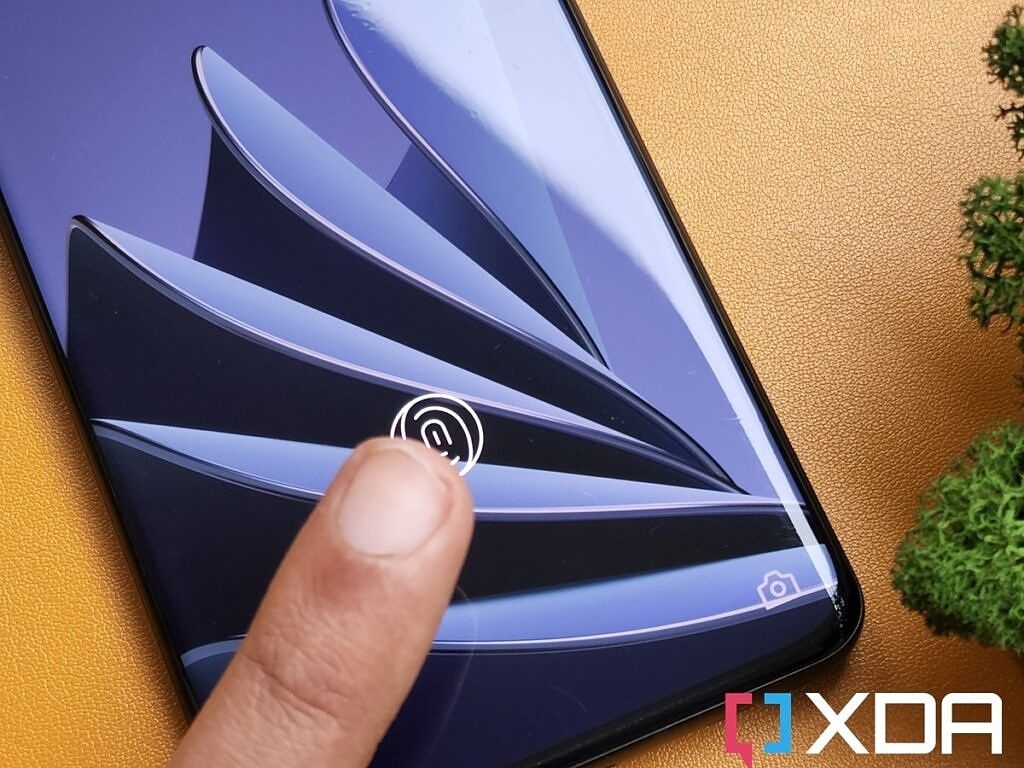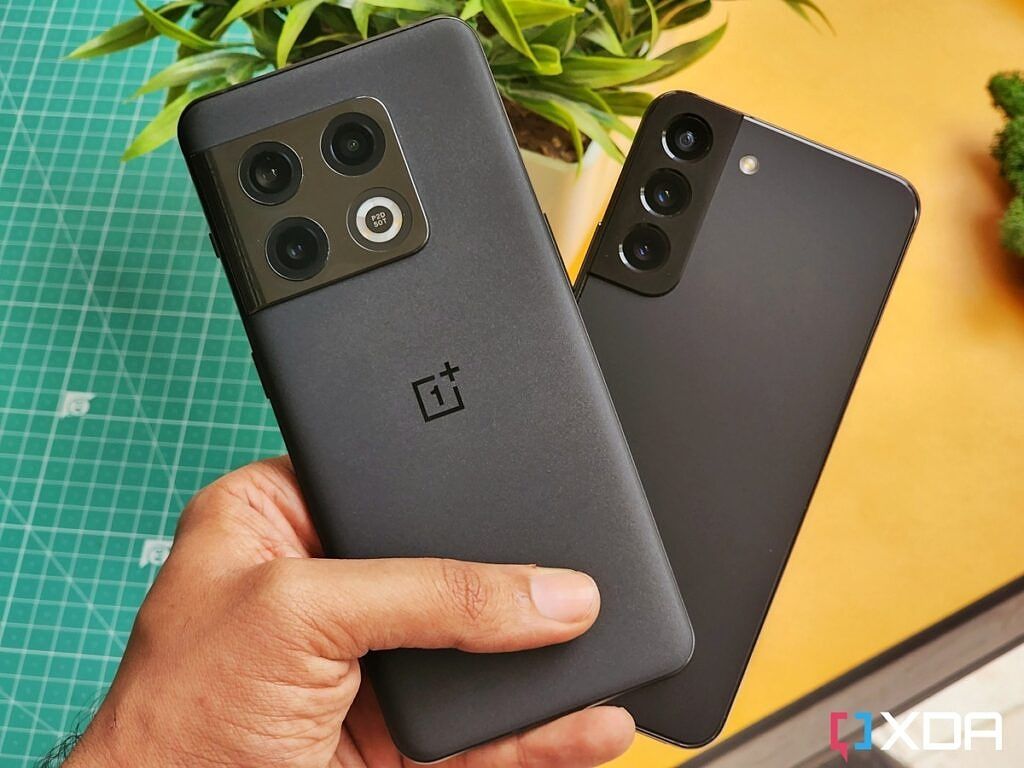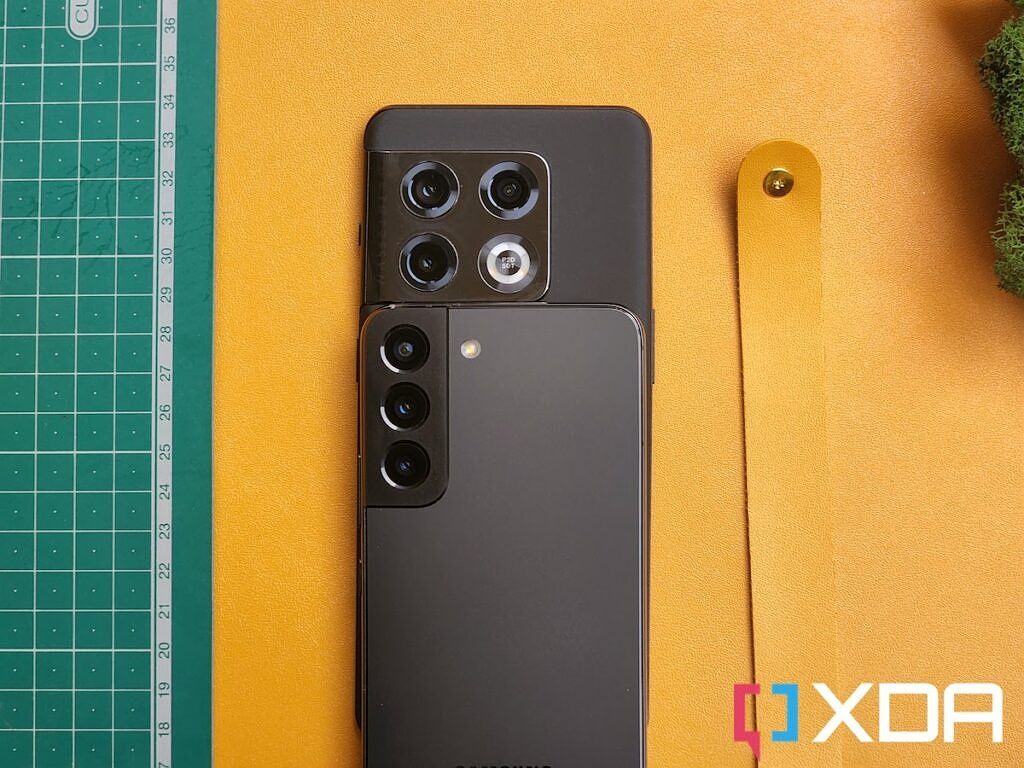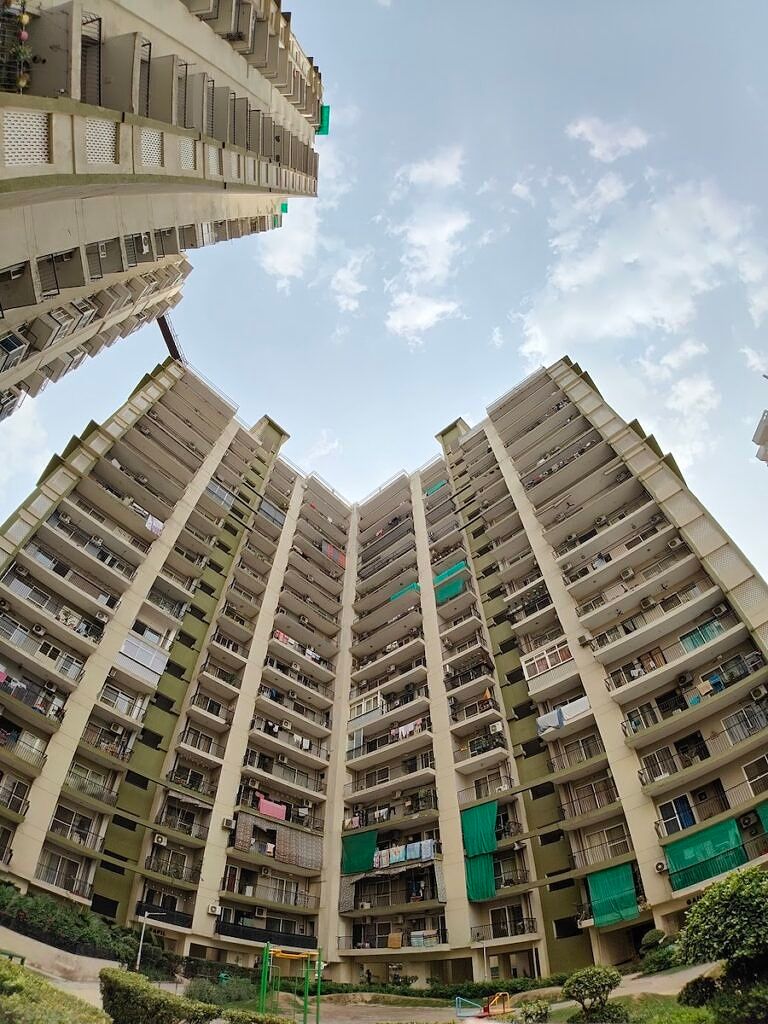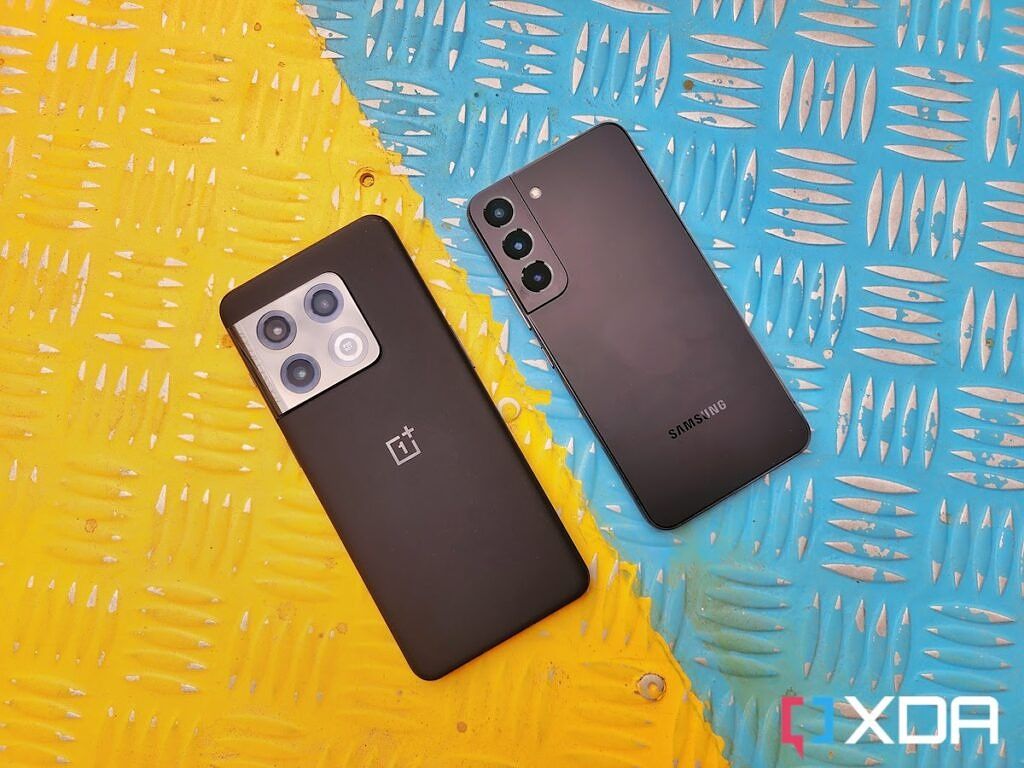OnePlus has established itself as a brand capable of making great phones that are serious alternatives to mainstream flagships. The OnePlus 10 Pro earns its keep with a laundry list of top-of-the-line specs with only a handful of notable compromises. The 10 Pro's $899 price tag also makes more sense than last year's OnePlus 9 Pro which carried a $1,069 launch price. OnePlus has clearly put in more effort to catch up with its competitors in the flagship space but does the OnePlus 10 Pro offer enough to warrant a recommendation over Google's Pixel and Samsung's Galaxy phones?
Well, I've had some time to play with both the OnePlus 10 Pro and Samsung's Galaxy S22 over the last few days, so allow me to draw a comparison between the two to see how they stack up against each other.
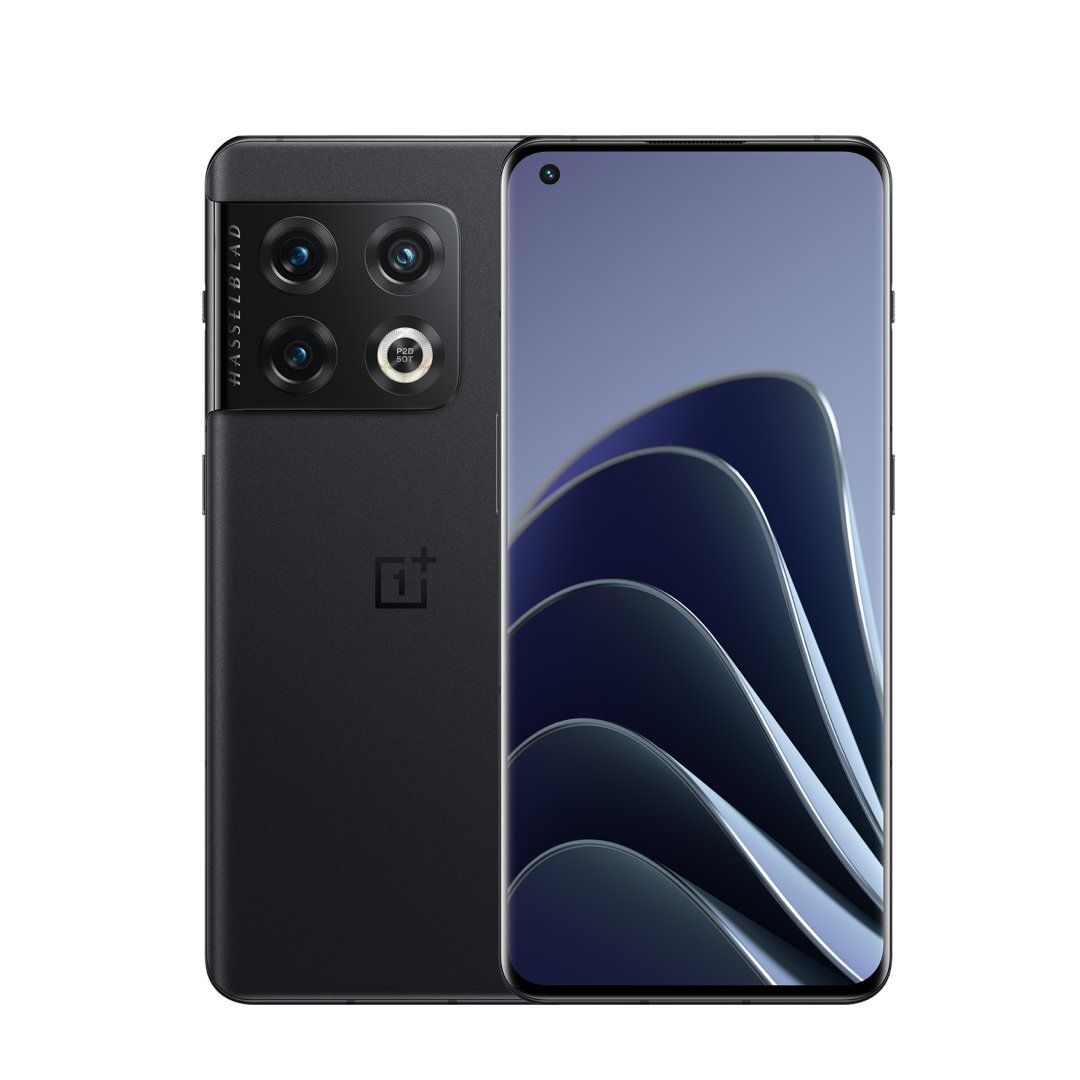
OnePlus 10 Pro
The OnePlus 10 Pro is the latest and greatest flagship smartphone from OnePlus, and packs some of the best performing hardware into one package. It's got a great chipset, good camera, and super fast charging all inside of a unique design.
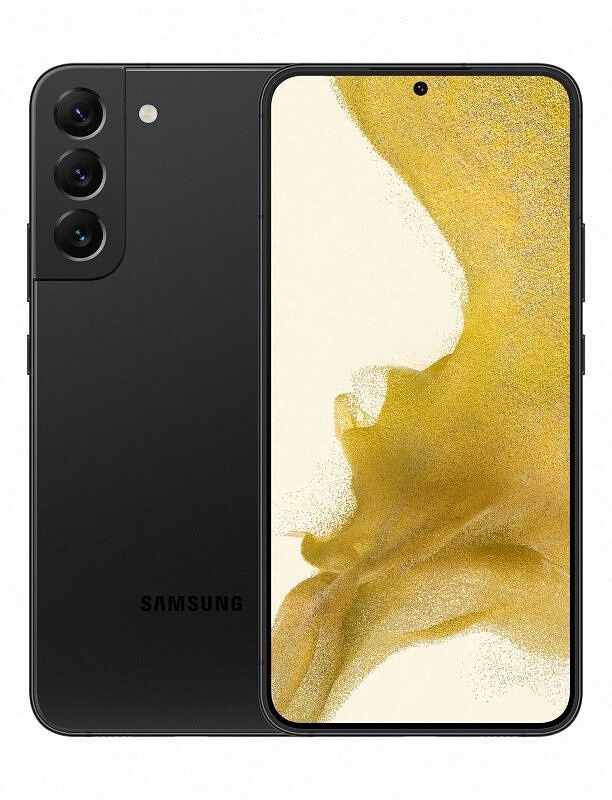
Samsung Galaxy S22
The Samsung Galaxy S22 is the entry flagship for 2022, bringing over top of the line performance and camera capabilities in a form that fits many pockets and budgets.
Navigate this artcile:
- Specifications
- Design & build quality
- Display
- Internal hardware and performance
- Cameras
- Software
- Which one should you buy?
OnePlus 10 Pro vs Samsung Galaxy S22: Specifications
|
Specification |
OnePlus 10 Pro |
Samsung Galaxy S22 |
|---|---|---|
|
Build |
|
|
|
Dimensions & Weight |
|
|
|
Display |
|
|
|
SoC |
|
|
|
RAM & Storage |
|
|
|
Battery & Charging |
|
|
|
Security |
Optical in-display fingerprint scanner |
Ultrasonic Fingerprint sensor |
|
Rear Camera(s) |
|
|
|
Front Camera(s) |
32MP, f/2.2/0.8µm |
10MP, f/2.2/1.22μm |
|
Port(s) |
|
|
|
Audio |
|
|
|
Connectivity |
|
|
|
Software |
|
Android 12 with One UI 4.1 |
|
Other Features |
|
|
About this comparison: We received the OnePlus 10 Pro in Volcanic Black and the Galaxy S22 in Phantom Black color for testing. I used both of these phones for a better part of the month before putting together this comparison. Neither company had input in this article.
OnePlus 10 Pro vs Samsung Galaxy S22: Design & build quality
The OnePlus 10 Pro and the Galaxy S22 are two vastly different phones when it comes to the design. With a 6.7-inch screen, the OnePlus 10 Pro is no doubt the bigger phone in this comparison. It features an aluminum frame with Gorilla Glass panels on both the front as well as the back. The 10 Pro isn't using the Gorilla Glass Victus Plus, though. It comes with the Gorilla Glass Victus on the front and Gorilla Glass 5 on the back panel.
The metallic camera housing at the back, as you can see, blends into the side rails of the phone. OnePlus took a page out of Samsung's book for this one but that's not necessarily a reason to despise it. I personally like the way this camera module looks overall. It gives it a little bit of personality, in my opinion, making it better than a lot of other phones that are all starting to look more or less the same. The textured matte finish at the back of the OnePlus 10 Pro gives it an elegant look and also keeps the fingerprints and smudges at bay.
This phone is also surprisingly comfortable to hold thanks to the rounded corners and good weight distribution. It feels easier for me to wield than the Galaxy S22 Ultra, though it's worth mentioning that I've only used the latter for a brief hands-on experience. I recommend you check out my colleague Ben's article comparing the OnePlus 10 Pro and the Galaxy S22 Ultra to learn more about the differences between those two phones in detail.
The Samsung Galaxy S22, on the other hand, looks a lot like its predecessor, the Galaxy S21. Besides a few quality of life changes, there's nothing new about the Galaxy S22 that makes it stand out from last year's Galaxy flagships. Both the Galaxy S22 and the Galaxy S22 Plus sport Gorilla Glass Victus Plus on both the front and the back. Samsung is also using Armor Aluminum frames for added durability.
It is safe to say that the Galaxy S22 is one of the few "compact" phones that are prominently seen on the market right now. That's also one of the main reasons why I've been using the Galaxy S22 more than the OnePlus 10 Pro outside of my work hours when I am not actively testing/comparing the two. The Galaxy S22 is flatter and has iPhone-like edges, which makes it easier to hold. The smooth back panel, the rounded edges, and just the overall compact footprint of the phone make it a joy to behold and maneuver.
Besides the obvious difference in size and the build material, there are a few other things to point out about the two phones. Both phones have a USB-C port at the bottom along with a down-firing speaker and a SIM card tray. The button layouts are different on both phones, though. The Galaxy S22 keeps the power button and the volume rockers on the right side, leaving the left side completely free. The OnePlus 10 Pro sports an alert-slider and a power button on the right side while the volume rocker sits on the left-hand side now.
On the durability front, the Samsung Galaxy S22 carries an official IP68 rating for dust and water resistance while that's not really the case for all the OnePlus 10 Pro units. Only the models sold by T-Mobile come with an IP68 rating. But considering the unlocked variant is structurally the same as the ones on T-Mobile's shelves, there should be no build quality difference, making me believe that the IP68 rating on T-Mobile units actually applies globally, too, but without the certification (and potential warranty) to show for it. Tread carefully.
All things considered, both phones have a lot going for them in the design department. While I see myself sticking with the Galaxy S22 mainly because of its compact footprint, I also see many people leaning towards the OnePlus 10 Pro. The Galaxy S22 is both thinner and lighter than the OnePlus 10 Pro, but it also comes with its fair share of compromises which we'll discuss in the sections below. Lastly, it's worth pointing out that the Galaxy S22 is also available in a bunch of fun colorways including the Phantom Black, Phantom White, Green, and Pink Gold along with the Samsung web store exclusive Graphite, Cream, Sky Blue, and Violet shades. The OnePlus 10 Pro is only available in two colors for now -- Volcanic Black and Emerald Forest.
OnePlus 10 Pro vs Samsung Galaxy S22: Display
Moving over to the front of each device, the OnePlus 10 Pro features a 1440p Fluid AMOLED panel with curved edges on the sides. We're looking at a maximum resolution of 1,440 x 3,216 pixels and a 20:9 aspect ratio. This phone features what I'd say is one of the best displays you'll find on a smartphone in 2022. It's an LTPO 2.0 OLED panel which means its refresh rate can drop all the way down to 1Hz while peaking at 120Hz depending on the content that's being viewed on the screen. The bezels are almost non-existent on the sides, but you can see a small chin and a forehead along with a punch-hole cutout for the selfie camera.
Samsung has fitted the Galaxy S22 with a relatively smaller 6.1-inch AMOLED 2X display that supports Full HD+ resolution (1,080 x 2,340). It has a 19.5:9 aspect ratio and support for up to a 120Hz refresh rate. Unlike the OnePlus 10 Pro or even the Galaxy S22 Ultra, the vanilla Galaxy S22 features an LTPS panel that offers 48-120Hz variable refresh rate support. The LTPO 2.0 panel is a significant improvement over the LTPS display used on the Galaxy S22 as it pays huge dividends in the power consumption department. While the Galaxy S22's display doesn't actually go down to 10Hz, Samsung says it has used a proprietary technology that minimizes data transfer rates from the AP to display to as low as 10Hz for improved power consumption.
That's all a part of the specs sheet but what about the real-world usage? Having used these phones to consume content over the last few weeks, I can say that the displays of each of these phones turn out to be evenly matched. I tend to use the 'Vivid' display mode on all smartphones and I saw no noticeable difference between these devices during my day-to-day usage. Regardless of the type of content you consume, you'll get crisp visuals and great colors overall. Side by side, I can see that both displays get equally bright when they’re both exposed to direct sunlight. Both phones top out at 1,300 nits of peak brightness, which I'd say is bright enough to be comfortably used outdoors. The bigger display on the OnePlus 10 Pro may translate to a better viewing experience but it mostly comes down to a personal preference.
Moving on, you get in-display fingerprint scanners with both the OnePlus 10 Pro and the Galaxy S22. OnePlus is using an optical fingerprint scanner whereas the Galaxy S22 gets an ultrasonic sensor. Based on my experience, both scanners are equally fast and responsive, although I did notice that the OnePlus sensor consistently reads my finger better even if it's slightly wet or covered with some food grease. It's little things that matter the most and I think OnePlus has nailed those aspects.
OnePlus 10 Pro vs Samsung Galaxy S22: Internal hardware and performance
The OnePlus 10 Pro uses Qualcomm's Snapdragon 8 Gen 1 chipset and it's served with either 8GB or 12GB RAM and up to 256GB of internal storage. The company recently debuted the 12GB + 256GB variant in North America, but the base variant with 8GB RAM and 128GB of internal storage has been available since the launch across all regions. In typical Samsung fashion, the Galaxy S22 comes in two variants that are powered by different chipsets. In the United States and some other regions, the Galaxy S22 is powered by the same Snapdragon 8 Gen 1 chipset while the others get an Exynos 2220 chipset instead. Unlike the OnePlus 10 Pro, the Galaxy S22 tops out at 8GB of RAM but you get an option to choose between either 128GB or 256GB of internal storage.
Like any other top-tier phones in 2022, both the OnePlus 10 Pro and the Samsung Galaxy S22 deliver flagship-level performance. Both phones in this comparison are running the Snapdragon 8 Gen 1 chipset, so they both are equally capable of offering plenty of processing power for day-to-day tasks. Let's take a quick look at the benchmark numbers first:
As you can see in Geekbench and PC Mark test results, the Galaxy S22 scored higher numbers than the OnePlus 10 Pro. This is in line with what we saw in our Galaxy S22 Ultra vs OnePlus 10 Pro comparison too. Is this a deal-breaker? If you care about the benchmark numbers then maybe yes, but these small differences in benchmark numbers never reflect during real-world usage. I could hardly tell the difference between the two even when I was using both phones side-by-side to open apps, run games to check loading times, etc. I don't play a lot of games on my phone but both devices managed to run Respawn's new Apex Legends Mobile very well.
It's likely that OnePlus is keeping the Snapdragon 8 Gen 1 tied to a leash to prevent it from getting too hot while running resource-intensive tasks. Despite the disparity in benchmark figures, however, I can confidently say that the OnePlus 10 Pro performs very much like a flagship phone. The same is true for the Snapdragon 8 Gen 1 chipset-powered Galaxy S22. As for the Exynos 2200 variant, I'd like to point you to my colleague Adam's article in which he comments that the Snapdragon Galaxy S22 series is better than the Exynos Galaxy S22 series.
Battery life and charging performance
As for the batteries, the OnePlus 10 Pro packs a 5,000 mAh cell which for all intents and purposes, is a heavy hitter. This is one of those phones that should have absolutely no issues getting through an average work day. In fact, even on days when my usage tends to be a little on the higher side due to extensive camera or performance testing, the OnePlus 10 Pro managed to keep the lights on for upwards of 10 hours before begging for more juice.
The Samsung Galaxy S22, however, is quite disappointing on the battery front. Look, the battery life was never really a strong suit of compact phones and that's very much the case here. The Galaxy S22 has a relatively smaller 3,700 mAh battery which struggles to keep up with my day-to-day usage. Even on the days when I am not pushing the Galaxy S22 to its limits, it drops down to, say, 20% at the end of every day. I had to pull out a power bank on the day when I stepped out of my house to take some camera samples. Simply put, I can't quite recommend the Galaxy S22 if you are a heavy user. You'd be better off buying the OnePlus 10 Pro in that case or stepping up to the Galaxy S22 Plus which has a bigger battery.
The OnePlus 10 Pro also gets the crown when it comes to charging. Not only does it charge much faster than the Galaxy S22, but it also comes with a charging brick inside the box that uses the company's proprietary charging technology. If I am being completely honest, the entire Galaxy S22 series is disappointing when it comes to charging speeds. The Galaxy S22, however, is particularly disappointing as it tops out at 25W charging.
During my time with both of these phones, I noticed that the OnePlus 10 Pro takes just over 30 minutes to charge from 0 to 100 percent using the 80W charger that came with the unit. It supports 65W charging in the US, but there's not a lot of difference between the two and it's likely to take similar amounts of time. In comparison, the Galaxy S22 takes about an hour to fully charge with a compatible 25W USB PD PPS charger. It's definitely nothing to write home about and I hope Samsung is taking notes. Perhaps we'll see some meaningful changes with the next Galaxy S series flagship now that the EU is harmonizing charging speeds with USB PD.
Speakers and haptics
It's getting increasingly difficult to pick a winner when it comes to the haptics, as all modern flagships are now fitted with excellent motors inside. In the case of the speaker quality, however, I'd say the Samsung Galaxy S22 sounds slightly better than the OnePlus 10 Pro even though they both get a stereo setup.
OnePlus 10 Pro vs Samsung Galaxy S22: Cameras
OnePlus has decided to bring back Hasselblad for another year, and the OnePlus 10 Pro isn't shy of showing it off with a huge branding at the back on the camera housing. The phone benefits from Hasselblad's color science, meaning each of the OnePlus 10's cameras can shoot 10-bit images. For those that don't know, the OnePlus 10 Pro features a 48MP main camera with an f/1.8 aperture, a 50MP ultra-wide camera with 110-degree FOV, and an 8MP telephoto lens with 3.3x optical zoom. The primary 48MP camera remains the same as last year, so keep that in mind.
The Samsung Galaxy S22 also sports a triple camera system. It includes a 50MP main shooter, a 12MP ultra-wide camera with 120-degree FOV, and a 10MP telephoto lens with 3x optical zoom. Thanks to the new telephoto lens, the Galaxy S22 now supports Expert RAW. It's safe to say that both OnePlus and Samsung have tweaked the camera systems on these phones to offer a slightly better camera experience compared to their predecessors.
Main cameras
As we've mentioned in a lot of our previous smartphone showdown articles, it's worth mentioning that smartphone cameras have gotten a lot better over the years and most flagships are capable of capturing some stunning images. Even though there are some noticeable differences between the two, I must say that both the OnePlus 10 Pro and the Samsung Galaxy S22's main cameras are pretty good. It's particularly impressive how you can easily just point and shoot to end up with a stunning photo with tons of details.
Here are a few samples takes from the OnePlus 10 Pro's main shooter:
All the above images from the main camera, as you can see, have turned out quite well since there's enough light in the scene. OnePlus 10 Pro tends to crank up the brightness a little bit in all of its images, although that's not necessarily proving to be an issue in these shots. We'll circle back to it a bit later while discussing low-light shots. I'd say the OnePlus 10 Pro's main camera has done a pretty good job of retaining the contrast and the shadows. Now, let's a look at the same set of images captured using the Galaxy S22's main camera:
The photos captured using the Galaxy S22's main camera seem to be equally good, but it's safe to say that the OnePlus 10 Pro pulls in more light. This is particularly evident when you look at the first image in which you can see more details in the shadows near the bricks. Similarly, there's more light to be seen in the last image with a bunch of bamboos. In typical Samsung fashion, the colors appear a bit more saturated than they actually are in real life, but it's not nearly as aggressive as it used to be.
Now, let's take a look at some low-light photos captured using the main cameras of each of these phones. First off, some samples from the OnePlus 10 Pro:
The OnePlus 10 Pro's images in low-light are clearly not as good as the ones captured during the day. Obviously, the scenes are different but I noticed that the phone struggles to capture good images. The shots turned out warmer than usual and you can also see a lot of grain, especially when you zoom in. The first and second images lack details and the colors look a bit washed out. The third image is way too warm for my liking and whereas the last image of my shoes also lacks details. In 10 Pro's defense, the last image was captured in pitch-black condition with absolutely no light, but I think the Galaxy S22's version is more accurate to the scene as you'll see below:
The same set of low-light images captured using the Galaxy S22 is way more detailed. In the first image, for instance, you can zoom into the adjacent buildings and see a lot more details in the shadows. While the other images turned out a bit warmer, the Galaxy S22 has managed to retain a lot of sharpness and details. The last image captured using the Galaxy S22 managed to retain all the colors on the shoes very well. It also looks sharper and more presentable if I was to share it on social media.
It's worth pointing out that I captured all the low-light images attached above in Night mode. The same set of images captured using the normal camera did turn out well, but I think the Night mode helps tighten up the details. Notably, the Night mode on the OnePlus 10 Pro automatically kicked in as so0n as it detected a low-light scene, whereas I had to manually enabled the Night mode in Galaxy S22.
Ultra-wide and Zoom lenses
Here's a quick look at a couple of ultra-wide images captured using the Galaxy S22 and the OnePlus 10 Pro:
Switching between wide and ultra-wide angle cameras was seamless on both phones. There was no delay while switching, meaning you can instantly switch back and forth to make sure you're capturing a different perspective of the same scene. The OnePlus 10 Pro consistently managed to produce brighter images as you can see in the case of the first image above. That, however, wasn't the case in low-light.
The OnePlus 10 Pro, as I mentioned earlier, can also shoot in a full 150-degree field of view. However, you'll have to select this mode manually as the camera defaults to 110-degrees. Here's a quick look at an ultra-wide image captured with the fisheye effect:
I really like this particular ultra-wide shot as it has a pretty good dynamic range and captures more of the scene. This would be my preferred way to capture ultra-wide images with the OnePlus 10 Pro.
Moving on to the telephoto lens, I'd say both the OnePlus 10 Pro and the Galaxy S22 are on par with each other with their zooming capabilities. They both preserve details, so you'll be able to produce some good-looking shots overall. Here, take a look:
Selfies
The Samsung Galaxy S22 features a 10MP selfie camera while the OnePlus 10 Pro comes with a 32MP selfie shooter on the front. I am attaching some selfies captured using each phone below, so be sure to check them out:
Overall camera verdict
I have to admit that OnePlus smartphones have gotten a lot better in the camera department over the years. That's a relief because a lot of older OnePlus cameras used to consistently lag behind the competition. The OnePlus 10 Pro, as you can see, was able to capture some solid photos but I have to hand it over to the Galaxy S22 for producing better-looking images overall. Both phones capture great photos during the day when there's enough light but the OnePlus 10 Pro starts to struggle in low-light conditions. Low-light photos captured using the OnePlus 10 Pro have more light but they lack details, especially when you zoom in. The camera systems on both phones offer the same level of versatility, but I think the Galaxy S22 offers a well-rounded experience.
OnePlus 10 Pro vs Samsung Galaxy S22: Software
In the software department, both phones run Android 12 with their own Android skin on top. Samsung's One UI, in my opinion, has more features to offer but it doesn't appeal to me visually which is why I tend to use a third-party launcher like Nova Launcher or Lawnchair. There are bugs and minor annoyances to be found in both skins, to be honest, but I personally find the Oxygen OS to be more inconsistent now. We've highlighted some of the issues with Oxygen OS in our OnePlus 10 Pro review that we've linked earlier in this article, so be sure to check it out.
That being said, the Oxygen OS isn't unusable by any stretch of the imagination. There's a lot of fun to be had with the Oxygen OS too, but it so happens that it's no longer my preferred Android skin as others simply offer better features and are more stable. Samsung's Dex mode, for instance, is a great feature that I see myself using a lot.
Another reason why I prefer -- and recommend -- One UI over the others is because Samsung is promising four years of updates for its One UI version of Android which is even better than what Google promises for its Pixel phones. OnePlus, in comparison, is only promising three years' worth of software updates. So if you're planning to hold on to your shiny new phone for many years to come, then the Galaxy S22 is the one to go with.
You can also unlock the bootloader for these phones to tinker with updates and some other features. The OnePlus 10 Pro is more approachable in that regard whereas Samsung phones don't play nice with unlocked bootloaders. You can unlock the bootloader of the Galaxy S22 variants that are sold outside the US and Canada, but there's always a risk of tripping the Knox security flags and breaking some useful features.
OnePlus 10 Pro vs Samsung Galaxy S22: Which one should you buy?
Well, we've had a lot of ground to cover and now it's time to give out the verdict. If you read through the whole comparison, then you probably already know that both the OnePlus 10 Pro and the Galaxy S22 have a lot going for them. Both phones look great and have a solid build quality. You also get beautiful AMOLED displays with support for up to a 120Hz refresh rate. And as I noted in the performance section, both phones deliver flagship-grade performance and they also have support for 5G connectivity.
That being said, I think this comparison plays out in favor of the Samsung Galaxy S22 in the end. Yes, it can use a bigger battery or faster charging speeds but those are pretty much the only qualms I have with this otherwise stellar smartphone. It's the most pocketable phone I've used in many years and it comes with an impressive display and a reliable set of cameras. Samsung’s update commitment is like the cherry on the top that gives almost every other flagship a run for their money. Not to mention, the Galaxy S22 also costs $150 less when compared to the OnePlus 10 Pro.
But if you don't like using small phones and don't mind spending $899 on a smartphone then don't hesitate to buy the OnePlus 10 Pro. I think it's an equally impressive phone that'll serve you well for many years to come.

OnePlus 10 Pro
The OnePlus 10 Pro is the latest and greatest flagship smartphone from OnePlus, and packs some of the best performing hardware into one package. It's got a great chipset, good camera, and super fast charging all inside of a unique design.

Samsung Galaxy S22
The Samsung Galaxy S22 is the entry flagship for 2022, bringing over top of the line performance and camera capabilities in a form that fits many pockets and budgets.
So which smartphone are you planning to buy? Let us know by dropping a line in the comments below. Also, be sure to stop our OnePlus 10 Pro deals and Galaxy S22 deals page to see if you can save some money on your purchase. You can use it to grab one of the best cases for these phones.

